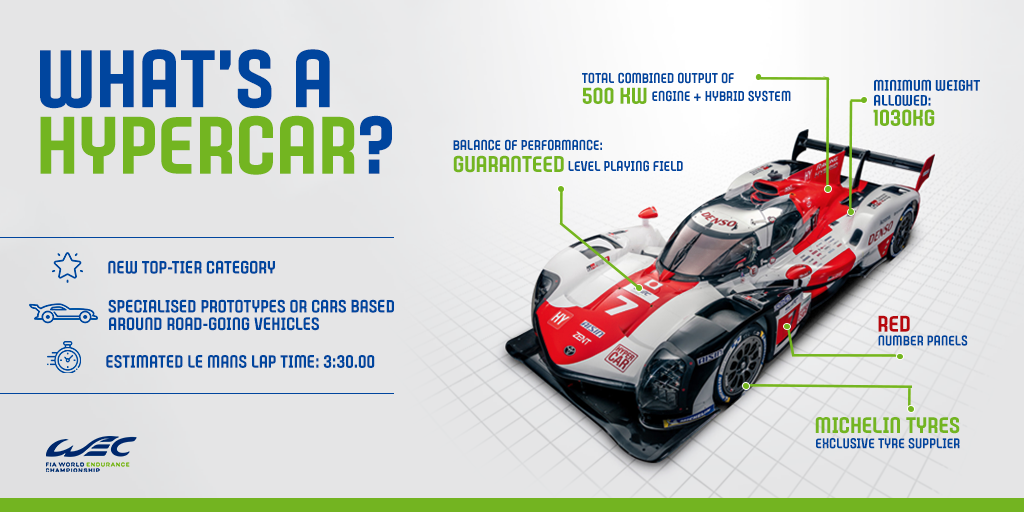HYPERCAR
The Hypercar category, a joint project of the FIA and the ACO, that back in 2018 was envisaged as the NEW top class of the FIA World Endurance Championship, had its debut in 2021, but it wasn't until this year when these ruleset really came of age, attracting a raft of manufacturers.
In 2024, the FIA WEC will feature an impressive 19 Hypercar entries from nine different manufacturers (Alpine, BMW, Cadillac, Ferrari, Isotta Fraschini, Lamborghini, Peugeot, Porsche and Toyota) highlighting the ongoing growth of the world's premier endurance racing series.
So, what makes the Hypercar class so successful? The ruleset, accommodating cars built to LMH and LMDh technical regulations, represents a major shift in philosophy compared with the LMP1 class it replaced. It allows for far greater variety both in terms of technical approaches as well as the aesthetics of the cars, at the same time ensuring sporting equality and preventing cost escalation through the concept of performance windows.
Technical Regulations are focused on controlling performance outcome instead of setting design or geometrical restrictions, allowing manufacturers to choose cost-effective solutions as significant expenditures do not translate to performance gains.
This autonomy allows the automakers not only to replicate brand identity, maintaining the spirit of the brand and remaining relevant to their road car philosophy, but also to express true potential in terms of creativity and innovation. Less rigid aerodynamic constraints established for the cars give them the option to incorporate styling elements to the design.

Dimensions
- Minimum weight: 1030 KG
- Balance of Performance: Guaranteed level playing field
- Maximum output: 500 kW
- Number panels: Pantone red 653
- Single tyre manufacturer: Michelin
- Controlled costs: Budget reduced
- Le Mans lap time: Estimated race average at 3:30.00
LMGT3
The new-for-2024 GT class will be based around FIA's existing GT3 technical platform and will focus on gentlemen drivers and private teams. LMGT3 will replace cars built to LMGTE technical regulations that have been on the WEC grid since the series' inaugural season in 2012. The cars will feature several WEC-specific adaptations such as luminescent number panels and leader lights.
In 2024, there will be 18 LMGT3 cars on the WEC grid including entries from Aston Martin, BMW, Corvette, Ferrari, Ford, Lexus, Lamborghini, McLaren and Porsche.


